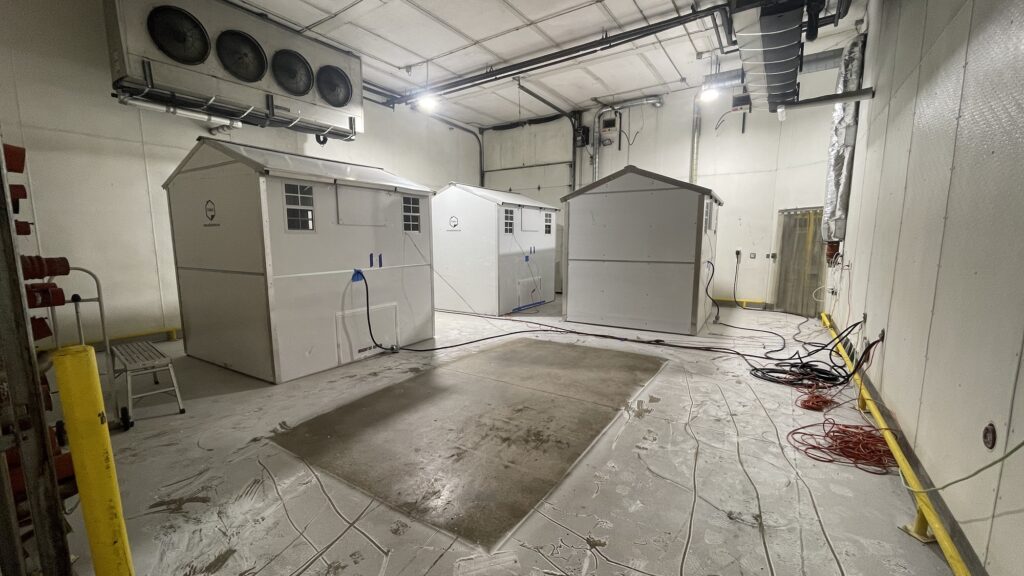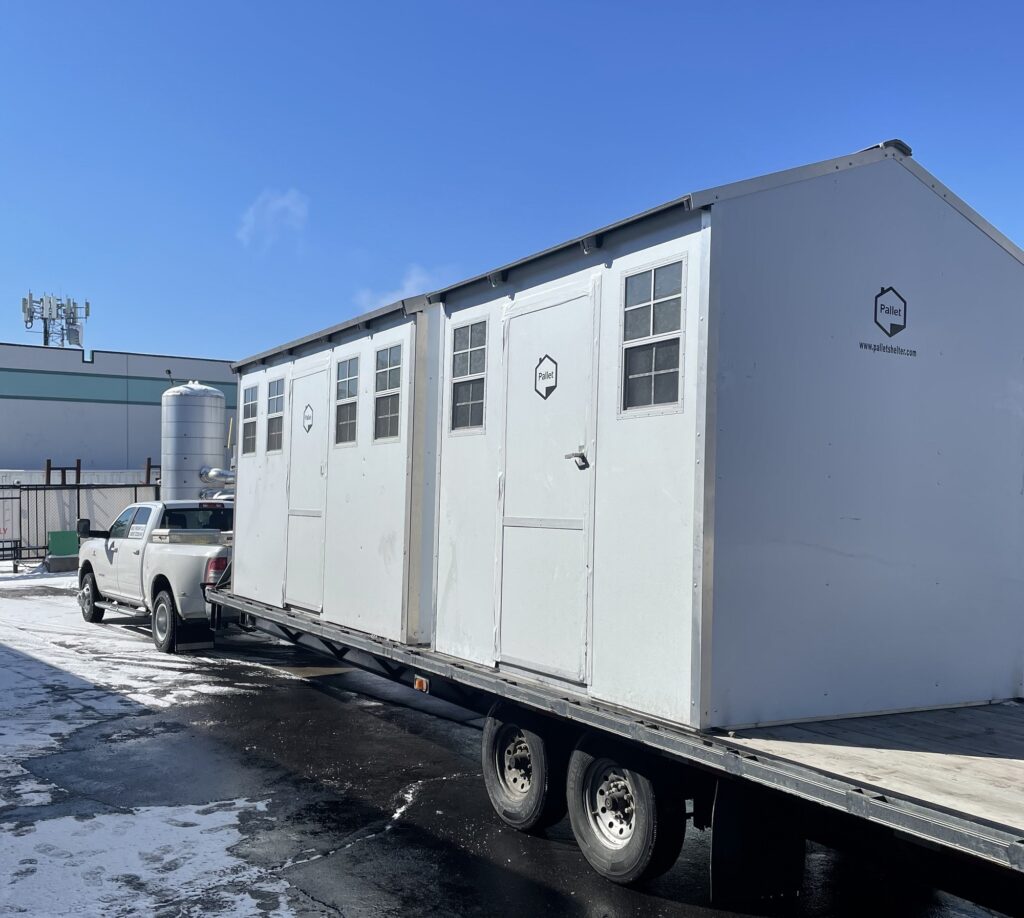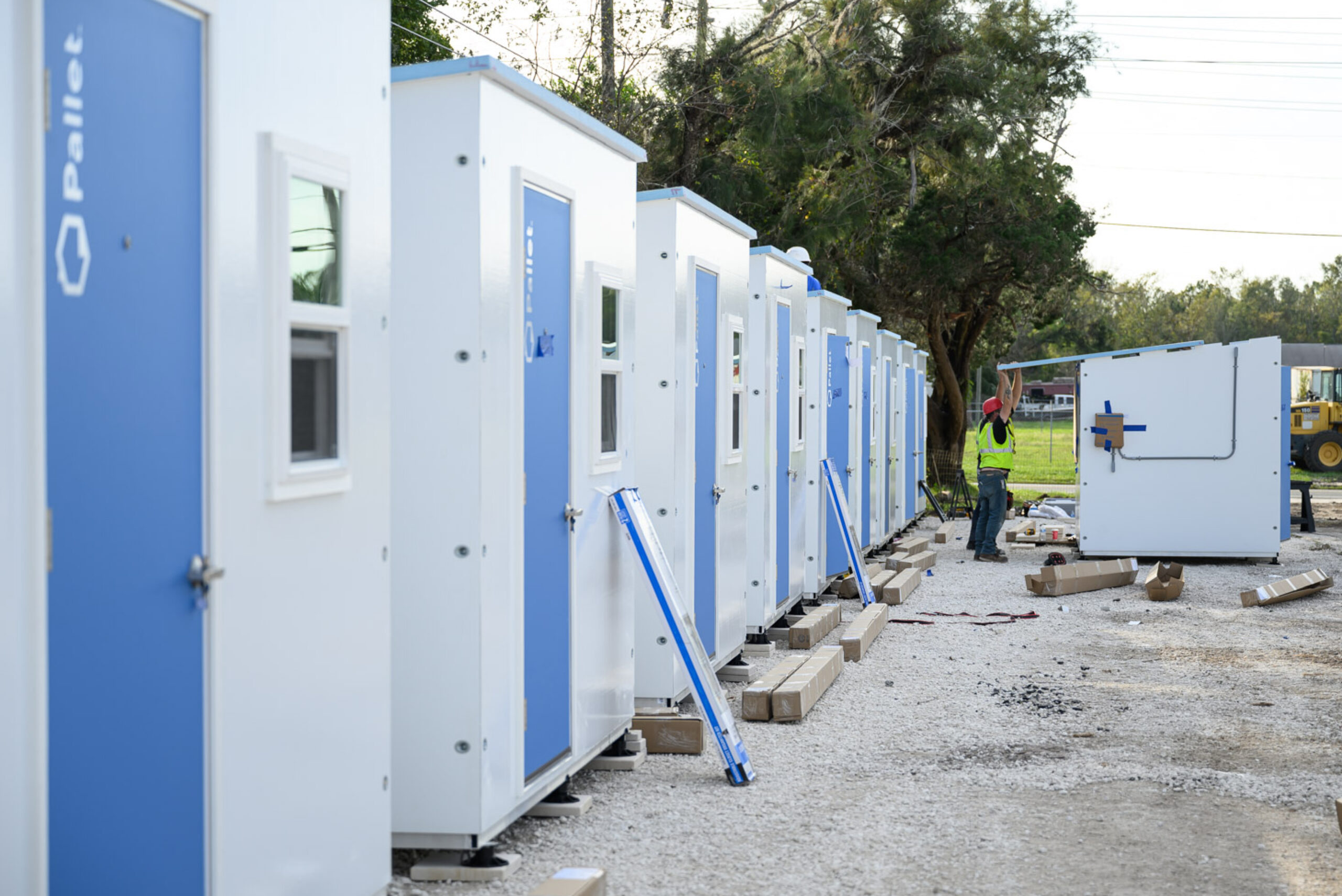How Pallet shelters are tested for cold conditions
April 21, 2022

As part of our commitment to provide dignified space for people experiencing homelessness, we are continually improving our shelters. Conducting tests is one way to ensure Pallet shelter village residents are comfortable inside their cabins and safe from the elements. Recently two members of Pallet's engineering team — Jordan, Design Engineer, and Jessie, CAD Designer — oversaw an independent assessment of our heaters and the 64 sq. ft. and 100 sq. ft. shelters. Specifically, we wanted an additional analysis of thermal efficiency in cold weather and the power consumption of the heaters.
After researching testing facilities, Jessie found SGS, a world leader in product testing, inspection, and certification. Their facility includes state-of-the-art testing cells, on-site engineering personnel, and technical support staff. In addition to specific testing capabilities, we also needed certain physical requirements.
"We were looking for a chamber that would be big enough to hold four to five fully assembled shelters," Jessie shared.

Testing took place over four days at the SGS facility in Colorado. The shelters were placed inside a chamber that could reach -10 degrees Fahrenheit. It only took about 15 - 20 minutes to make temperature adjustments which allowed us to test a wide range of climates. The equipment SGS used included thermocouples that measured the temperature inside the shelters. A Hioki machine analyzed the power usage of the heaters.
"If we get a sense of how much a 4500-watt heater consumes in an hour at a certain temperature and we know how often a location is within that temperature range, we could say this is how many kilowatt-hours you'll consume in this amount of time," Jordan explained. "If we know how much power it's using in an hour, we can turn that into a dollar amount based on the cost of electricity."
These reliable test results enable us to paint a fuller picture of the electricity costs associated with a Pallet shelter village. We also evaluated the effectiveness of weather stripping and insulation of the sleeping cabins. Jessie and Jordan watched the data collection on monitors in real-time.
Overall, the testing was successful. The staff were meticulous in their approach and were helpful.
"Their techs, the senior research engineer, working with us, were super helpful, super accommodating with everything, even giving us that extra day when our truck was delayed," Jessie said.
Now that testing is complete, Pallet's engineering team is assessing the results to locate areas for design improvements and cost reductions.
"It will inform us quite a bit and give us an excellent baseline to investigate further design and improve our cold weather units," Jordan added.


